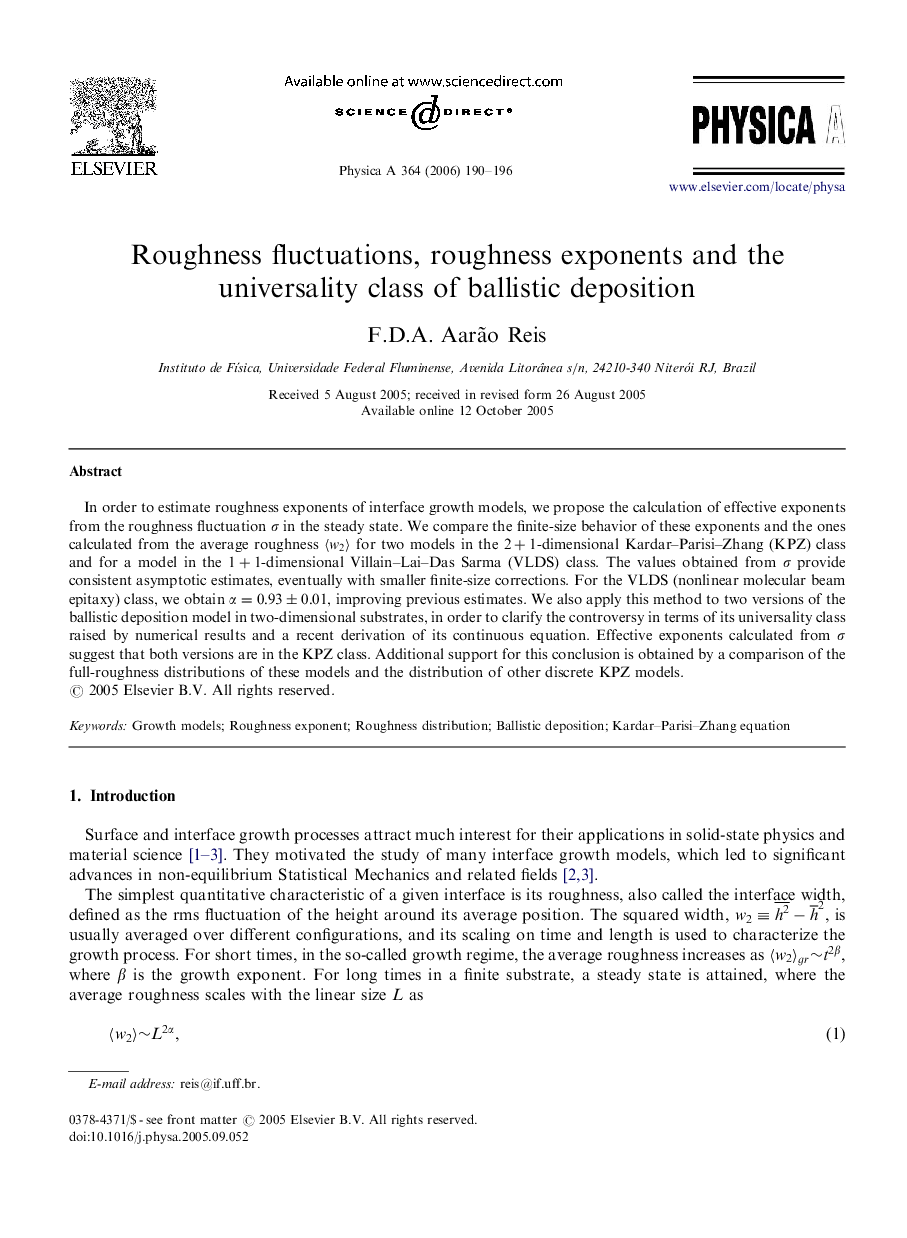| Article ID | Journal | Published Year | Pages | File Type |
|---|---|---|---|---|
| 977509 | Physica A: Statistical Mechanics and its Applications | 2006 | 7 Pages |
In order to estimate roughness exponents of interface growth models, we propose the calculation of effective exponents from the roughness fluctuation σσ in the steady state. We compare the finite-size behavior of these exponents and the ones calculated from the average roughness 〈w2〉〈w2〉 for two models in the 2+12+1-dimensional Kardar–Parisi–Zhang (KPZ) class and for a model in the 1+11+1-dimensional Villain–Lai–Das Sarma (VLDS) class. The values obtained from σσ provide consistent asymptotic estimates, eventually with smaller finite-size corrections. For the VLDS (nonlinear molecular beam epitaxy) class, we obtain α=0.93±0.01α=0.93±0.01, improving previous estimates. We also apply this method to two versions of the ballistic deposition model in two-dimensional substrates, in order to clarify the controversy in terms of its universality class raised by numerical results and a recent derivation of its continuous equation. Effective exponents calculated from σσ suggest that both versions are in the KPZ class. Additional support for this conclusion is obtained by a comparison of the full-roughness distributions of these models and the distribution of other discrete KPZ models.
